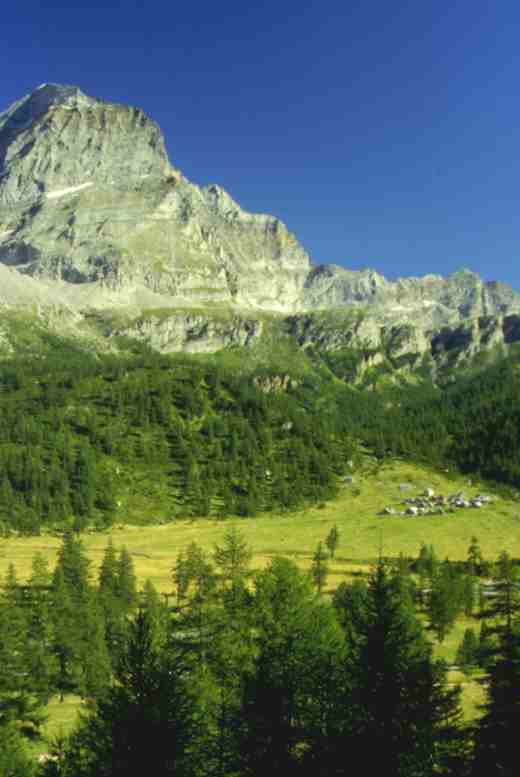 Silviculture, of central importance in forestry, is concerned with applying the principles of forest ecology to the cultivation of forests. It is a dynamic field in which knowledge about ecology, management and social and economic issues converges and is reconciled. This nexus of previously separate points of view can thus be seen as the tool of reconciliation between the ecological needs of the forest and the social and economic needs of humans. It is also, on the one hand, the sector of forestry where the most up to date research results get applied and where dialogue among different theoretical approaches and among different forest lovers and users takes place and on the other, where local traditions and customs having their roots in past social and economic contexts have persisted most strongly.
Silviculture, of central importance in forestry, is concerned with applying the principles of forest ecology to the cultivation of forests. It is a dynamic field in which knowledge about ecology, management and social and economic issues converges and is reconciled. This nexus of previously separate points of view can thus be seen as the tool of reconciliation between the ecological needs of the forest and the social and economic needs of humans. It is also, on the one hand, the sector of forestry where the most up to date research results get applied and where dialogue among different theoretical approaches and among different forest lovers and users takes place and on the other, where local traditions and customs having their roots in past social and economic contexts have persisted most strongly.
Forests are able to live and regenerate without human intervention. Forest tending is practised to maintain or improve specific products and functions required by humans. However, while forest dynamics and the ecological factors that affect forest stands are mostly subject to changes so slow and gradual as to be imperceptible to humans, social and economic factors are subject to changes which are sudden and radical.
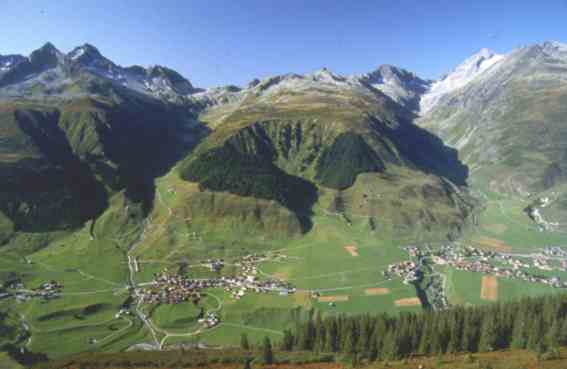 In the past, Alpine forests were harvested intensively or modified by man, but differently to other forests in temperate or boreal regions, production was never restricted to timber. The use of Alpine forests for timber has traditionally been combined with other functions to maximize economic and social benefits.
In the past, Alpine forests were harvested intensively or modified by man, but differently to other forests in temperate or boreal regions, production was never restricted to timber. The use of Alpine forests for timber has traditionally been combined with other functions to maximize economic and social benefits.
In the last few decades, however, rapid and profound changes in land use and in cultural expectations have given rise to difficulties in silvicultural management. Most of the present stands are the result of past management with different objectives to those presently held by stakeholders and society. It is of vital importance, while responding to the most important current needs of society, to have the foresight to conserve the biological functioning and peculiarity of each single forest stand.
Forests are a precious social heritage whose benefits extend throughout the environment with advantages to the whole society. At present the main services required of Alpine forests by the public and by the economic sector are direct and indirect protection, nature conservation, landscape and timber production. Forests are still an important source of work and income for Alpine communities.
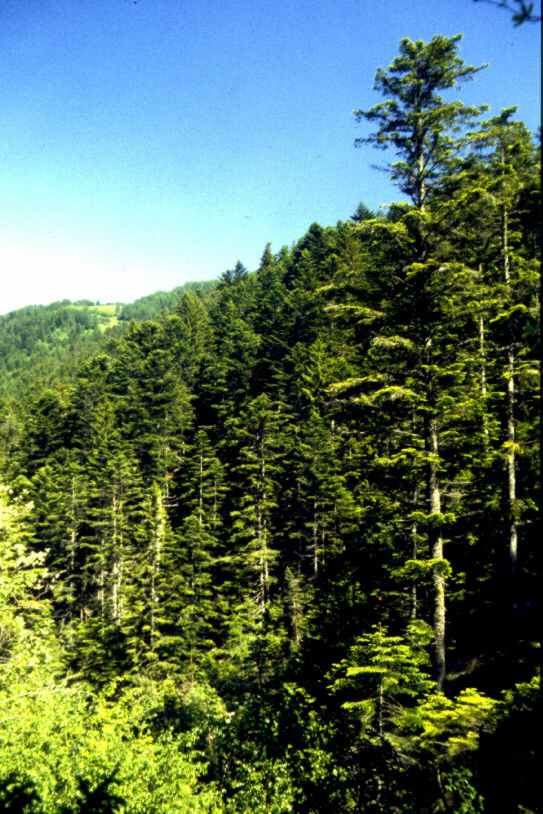 Present silvicultural practises respect the environment and biodiversity and have a high degree of sustainability. Sustainable management of forests in Piedmont generates jobs not only in the forests themselves, but along the whole wood forestry chain including the final production stages. Such opportunities are particularly important in the valleys that do not have a tourist industry. Wood is one of the raw materials in greatest demand, and its domestic and industrial use is foreseen to increase even further by the beginning of the next century.
Present silvicultural practises respect the environment and biodiversity and have a high degree of sustainability. Sustainable management of forests in Piedmont generates jobs not only in the forests themselves, but along the whole wood forestry chain including the final production stages. Such opportunities are particularly important in the valleys that do not have a tourist industry. Wood is one of the raw materials in greatest demand, and its domestic and industrial use is foreseen to increase even further by the beginning of the next century.
The Alpine forests, especially those in Piedmont, cannot completely satisfy the demand for wood from local and national industries. On the other hand, their productive capacity is only partially exploited, but readers must bear in mind that most of the forest harvesting and tending are costly and possible only when funds are granted by public administration.
The underexploitation of the potential productivity of our own forests is compensated by cutting down cultivated tree crops and natural forests, with potentially disastrous effects for ecosystems in other parts of the world as well as an increase in the amount of energy consumption and pollution resulting from the transport of timber (thinking globally while acting locally). Another possible strategy would be to supplement increased forest timber production with wood from industrial afforestations. Italy imports more than 90% of the wood required by the wood industry.
The silvicultural guidelines in this manual, summarized below, have been distilled from our experience in Piedmont. The silviculture described has been inspired by Gurnaud (1886), Biolley (1920), M�ller (1922) and, more recently, Susmel (1980); by the silvicultural policies adopted in Trentino and other Italian regions, and by the Swiss school of mountain silviculture represented by Leibundgut (1975), Trepp (1974; 1981), Bischoff (1994) ed Ott (Mayer, Ott, 1991; Ott et al. 1991; Ott et al., 1997).
Silvicultural guidelines
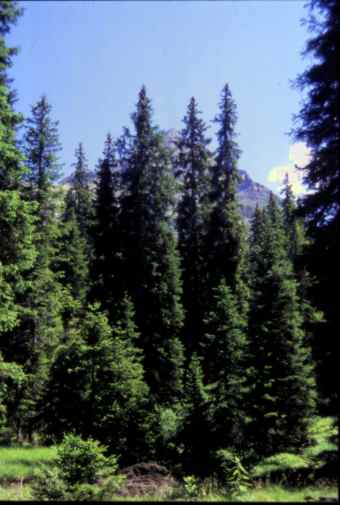 Silvicultural interventions should be based on cultural criteria and should be aimed at the maintainment and recovery of the forest stand.
Silvicultural interventions should be based on cultural criteria and should be aimed at the maintainment and recovery of the forest stand.
Interventions should be realistic. Medium-long term objectives must take into account the time required by natural dynamics and the need to improve existing stands. For example, the succession of an early seral or pioneer species by a late seral species should not be artificially speeded up if the presently dominant species is young and can still carry out a useful function. It is better to favour and monitor natural succession, thereby improving the stability and potential of the present stand. This approach is also compatible with the fact that most of the forest tending in the Piedmont forests are costly and are not included in long term management.
The functions carried out by each forest stand should be established, and stands requiring short or medium term interventions to maintain important functions should be distinguished from those which can or should be left to develop naturally. The percentage of forest stand that it is opportune, or possible, to allow to develop naturally varies according to site factors and socio-economic factors from a minimum of 10 - 20% of the forested surface area in some valleys in the Trento region, up to as much as 50% in some valleys in Piedmont.
The frequency of interventions must reflect the required function and the present structural-dynamic status of the forest stand. In uneven-aged and multi-layered forests, for example, economic pressure to harvest the maximum possible volume of timber per unit of surface area should not lead to an excessive increase in the cutting cycle, which would result in a more mono-layered structure; slow forest dynamics and high costs make frequent interventions in the protective forests in the subalpine belt impossible.
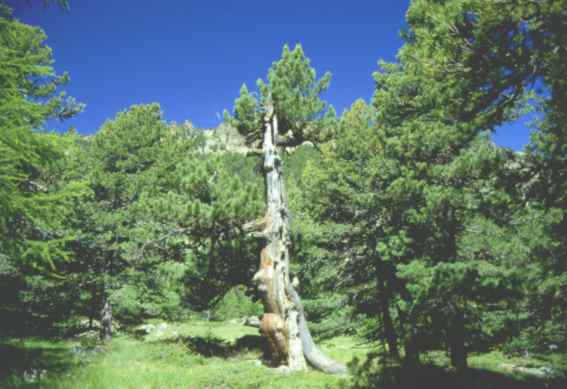 Silvicultural interventions must be effective. Each intervention must have certain, specific objectives to make it investment in the future of the forest. For the intervention to be justified, the objectives must be attained. They should not be too cautious or indecisive, or the results of intervention will be worse than those of non- intervention.
Silvicultural interventions must be effective. Each intervention must have certain, specific objectives to make it investment in the future of the forest. For the intervention to be justified, the objectives must be attained. They should not be too cautious or indecisive, or the results of intervention will be worse than those of non- intervention.
The silvicultural intervention must be planned according to what is available in the local infrastructure and the local timber market situation. It is essential to carry out a preliminary survey of the road system, possible ways to extract timber, the timber assortment that can be fed into the local market, the availability of experienced workers and the attitude and expectations of the owners of the forest. A theoretically good silvicultural intervention can turn out to be inadequate or erroneous if we fail to take into account one of these factors.
Silvicultural interventions are carried out in the interests of the owner of the forests and the entire population. It is therefore the duty of the forester to provide the public with an explanation and discussion of the objectives, techniques and possible alternatives, and to accept discussion and criticism.
The definition of appropriate management strategies requires awareness of local environmental conditions, of the past uses of the territory and the forest stands, of past human and natural disturbances and of the ecological and physiological requirements of the single species. Every forest stand is unique in time and space: we must thus proceed with caution when applying knowledge and experience acquired on one stand to another. The pragmatic tendency to develop a strategy that gave good results in one area and apply it extensively over vast surfaces needs to be halted.
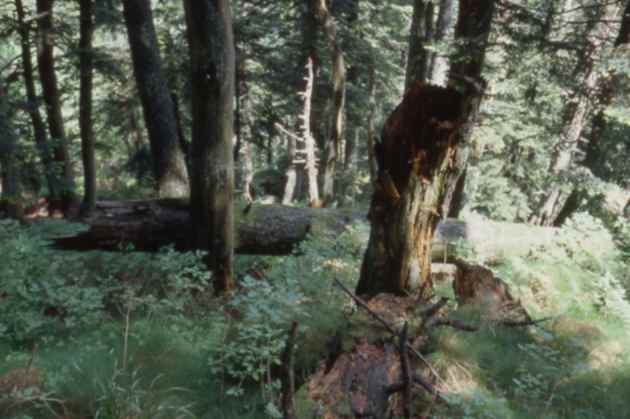 Be aware that each silvicultural intervention described in this book represents one of the possible solutions available for the forester to attain a foreseen objective. The intervention must be choosen after thorough analysis of the status quo and the objectives to achieve. Although the easiest way to choose an intervention is to follow an available scheme or apply an "ideological" solution, every forest is unique, and the forester must look for the intervention that best fits a given forest stand. Good silviculture is impossible without specific knowledge of the site and ecological factors acting locally: the silvicultural strategy adopted must be adapted to suit these peculiarities. Also that silvicultural practise must take global and local societal expectations into account along with the increasing scientific knowledge acquired through forest research. The best results - where human requirements are satisfied within an equilibrium between commercial and social requirements and the ecological requirements of the forest - can only be achieved through accurate, dynamic management which takes account of past experience while exploiting new knowledge
Be aware that each silvicultural intervention described in this book represents one of the possible solutions available for the forester to attain a foreseen objective. The intervention must be choosen after thorough analysis of the status quo and the objectives to achieve. Although the easiest way to choose an intervention is to follow an available scheme or apply an "ideological" solution, every forest is unique, and the forester must look for the intervention that best fits a given forest stand. Good silviculture is impossible without specific knowledge of the site and ecological factors acting locally: the silvicultural strategy adopted must be adapted to suit these peculiarities. Also that silvicultural practise must take global and local societal expectations into account along with the increasing scientific knowledge acquired through forest research. The best results - where human requirements are satisfied within an equilibrium between commercial and social requirements and the ecological requirements of the forest - can only be achieved through accurate, dynamic management which takes account of past experience while exploiting new knowledge
This book gives a silvicultural analysis of the six species of spontaneous conifers present in mountain forests in Piedmont: Scots pine, silver fir, Norway spruce, mountain pine, larch, and stone pine. The silviculture of each species is described according to forest types.
Three chapters have also been dedicated to topics of particular importance for European Alpine forests: protective forests, the problem of wild ungulates, and nature conservation, parks and exploitation of the forests for tourism.